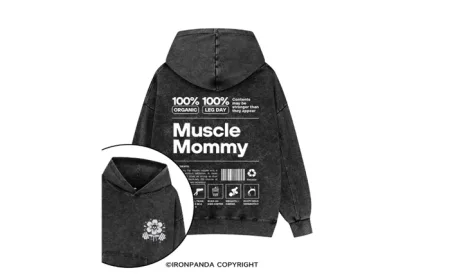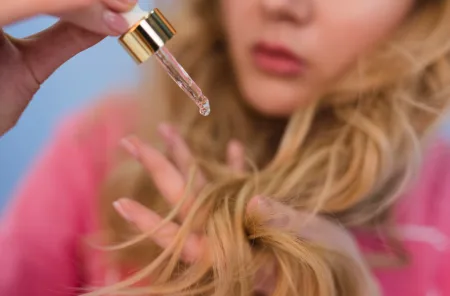Synthetic wigs have grown in popularity among ladies looking to improve their hairstyles due to its variety and simplicity. These wigs, with their realistic appearance and low-maintenance nature, provide a quick and easy alternative for achieving numerous appearances. However, one frequently asked issue is whether synthetic wigs can be curled. In this post, we’ll look at the possibilities of curling synthetic hair and how to obtain beautiful curls without inflicting heat harm.
Many individuals believe that synthetic wigs can only be worn in their original style and cannot be altered. With the correct equipment and procedures, however, you can generate stunning curls that will alter your wig and boost your whole appearance. Let’s get started curling synthetic hair and get some helpful hints along the road.
The first thing to think about is the type of synthetic hair you’re using. Heat-resistant synthetic hair and non-heat-resistant synthetic hair are two types of synthetic fibers used in wig creation. Heat-resistant synthetic hair is made to survive the use of heat appliances such as curling irons and flat irons. Non-heat-resistant synthetic hair, on the other hand, is more sensitive and cannot withstand direct heat. Before attempting to curl synthetic hair, you must first know the sort of hair you have.
Curling is relatively simple for individuals who own heat-resistant synthetic wigs. To set the curls, one popular approach is to use hot water. Begin by parting the hair into sections and rolling each segment onto a foam or plastic curler. Immerse the coiled parts in hot water for 15-20 minutes, preferably at 180°F (82°C). Allow the hair to air-dry thoroughly after removing the curlers. The end result will be bouncy, natural-looking curls that have not been damaged by heat.

If you have a synthetic wig that is not heat resistant, you can still achieve curls with different ways. The steam setting process is one effective method. To begin, fill a steamer halfway with water and heat it up. Wrap each section of hair around a foam roller or flexi rod. Allow the steam to enter each part of hair for a few seconds while holding the steamer close to the hair. Rep for all sections, then let the hair cool and set for a few minutes. Remove the curlers once the hair is totally dried to show your nicely curled wig.
Aside from these approaches, there are various products on the market that are specifically developed to help you curl synthetic hair. For example, heatless curling rods are flexible rods that may be wrapped around the hair to create curls without the use of heat. For individuals who want to avoid heat damage, these rods offer a convenient and safe option.
While curling synthetic wigs is possible, it is critical to exercise caution and use suitable procedures to avoid harm. Excessive heat or inappropriate methods can cause irreversible damage to the hair, such as frizz, breakage, or melting. As a result, before attempting to curl your wig, carefully read the manufacturer’s instructions and suggestions for your specific wig.

Furthermore, it’s worth noting that the styling options for synthetic wigs go beyond curls. There are ways available if you desire a straight or wavy style. To achieve a straight look, comb your hair carefully and use a low-heat flat iron or hair straightener developed specifically for synthetic hair. at avoid heat damage, keep the temperature adjusted at a safe level.
You can achieve a wavy effect by using the wet-setting procedure. Dampen the hair with water or wig-friendly setting spray before twisting small parts into loose coils or braids. Allow the hair to completely air-dry before undoing the twists. As a result, you’ll have smooth, natural-looking waves that lend a touch of grace to your style.
While synthetic wigs are convenient and versatile, they do necessitate extra care to preserve their shape and texture. Excessive heat sources, such as open flames, hot stoves, or hair dryers on high heat settings, should be avoided. Additionally, keep your wig away from harsh chemicals like chlorine or saltwater, which can cause damage and frizziness. Brushing and detangling the hair on a regular basis, using wig-friendly products, and storing it in a secure location will help retain its quality and minimize unnecessary wear and strain.
Cleaning your synthetic wig on a regular basis is also necessary to keep it in good condition. Use wig shampoo designed exclusively for synthetic hair and wash according to the manufacturer’s recommendations. To prevent tangling, gently comb through the hair with a wide-toothed comb or wig brush, beginning at the ends and working your way up. To keep the shape of the wig, let it air dry on a wig stand or mannequin head.
Keep your synthetic wig away from direct sunlight, excessive humidity, and dust when storing it. To help retain the style and shape of the wig, store it in a ventilated storage bag or on a wig stand.
Finally, synthetic wigs are curl-friendly and provide a variety of styling options for people looking to improve their hairstyles. Whether you want bouncy curls, silky straight hair, or graceful waves, there are techniques to help you get the style you want. Just remember to identify the type of synthetic hair you have and use the proper heat protection procedures. Your synthetic wig can remain a reliable and stylish accessory with correct care and maintenance, letting you to experiment with new hairstyles and boost your confidence.



